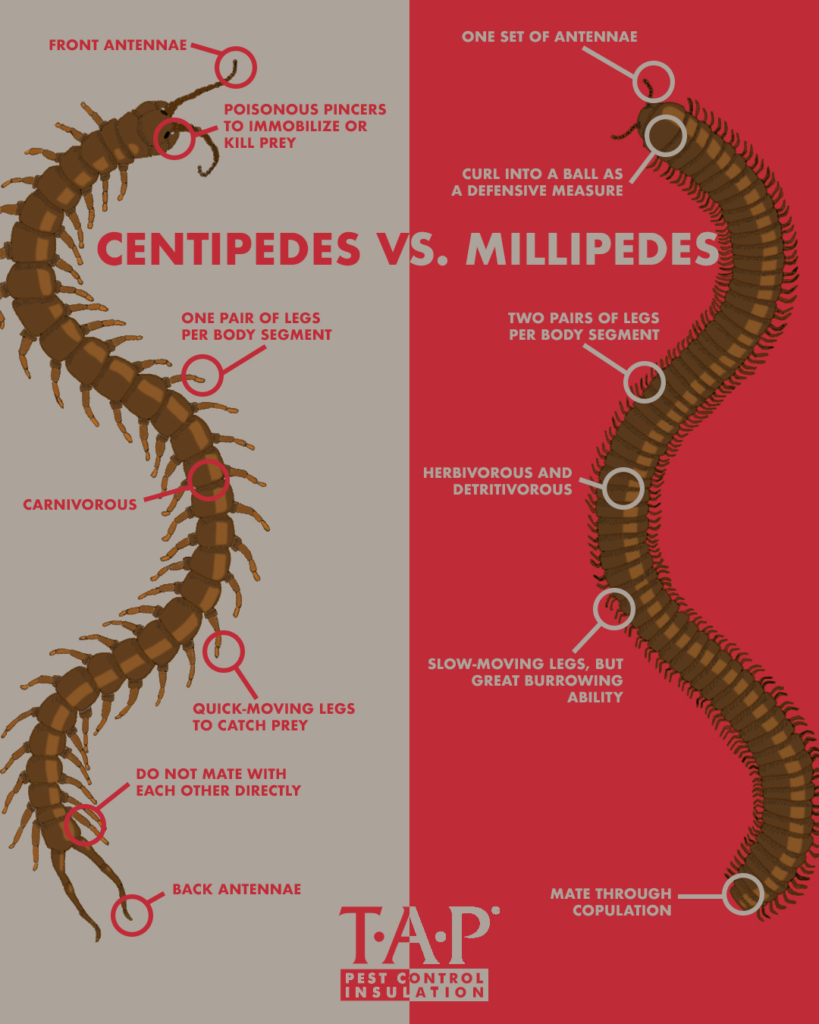Centipedes and Millipedes are arthropods, not technically insects! They are both descended from Arthropleura—a giant millipede-like creature that lived over 300 million years ago in North America and Scotland. It was the largest land-dwelling invertebrate of all time, reaching lengths up to 8½ feet! Centipedes and Millipedes may share this common ancestor, but otherwise have very little in common. Let’s take a look!

Legs
Centipedes have one pair of legs per body segment. Adult Centipedes can have anywhere from 30 to over 300 legs!
Millipedes have two pairs of legs per body segment. Millipedes can have anywhere from 10 to 300 legs!
Diet
Centipedes are carnivores. They eat other insects, and in some cases, larger animals, such as frogs, mice, and lizards.
Millipedes are herbivores and detritivores, which means they consume decomposing plant matter. They are also known to hang around ant colonies to eat waste left by the ants.
Defense
Centipedes have two poisonous pincers on their heads that they use to immobilize or kill their prey. Their bites are not typically fatal to humans, but can prove very painful and can cause an allergic reaction.
Millipedes do not have pincers. Instead, they curl into a ball to protect their softer undersides. Some Millipedes may also have glands that excrete a caustic or irritating liquid to deter predators.
Leg Power
Centipedes are able to move very quickly in order to catch their prey.
Millipedes move much more slowly. Their legs may not enable them to quickly escape predators, but their large number of small legs allow them to burrow powerfully.
Senses
Centipedes have two sets of antennae—one pair on their head and the other at their backends. These antennae help Centipedes make up for their poor eyesight.
Millipedes have only one set of antennae, located on their heads. Millipedes have much better eyesight than Centipedes do.
Mating
Centipedes do not mate directly. Male Centipedes produces a little package of sperm (a spermatophore). Female Centipedes then store the spermatophore for later use when they are ready to produce eggs.
Millipedes mate through copulation.
Ready to rid your home of Centipedes, Millipedes, and other pests? Contact us to be connected with a provider near you!

